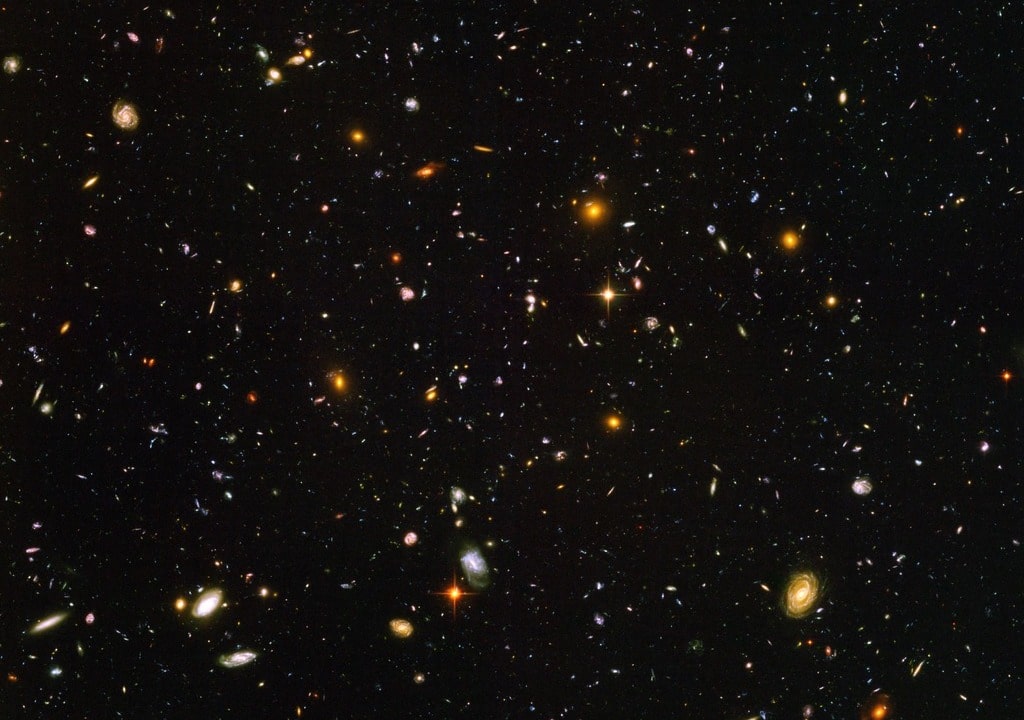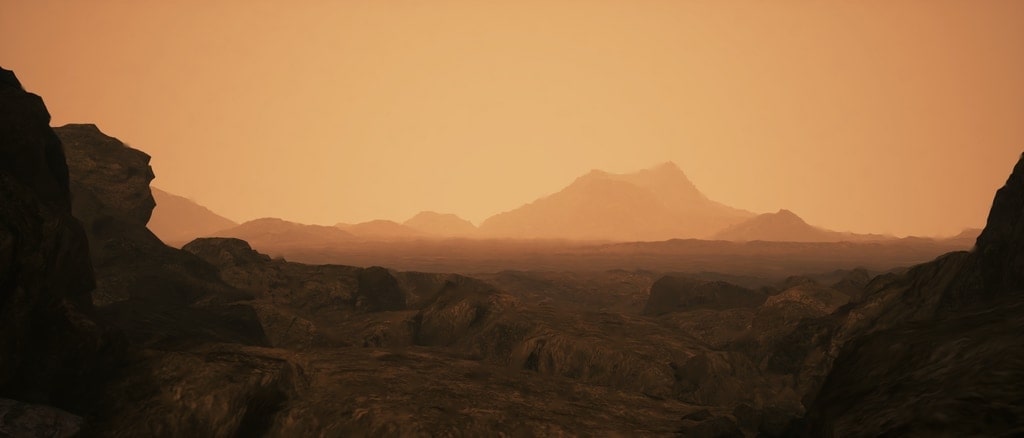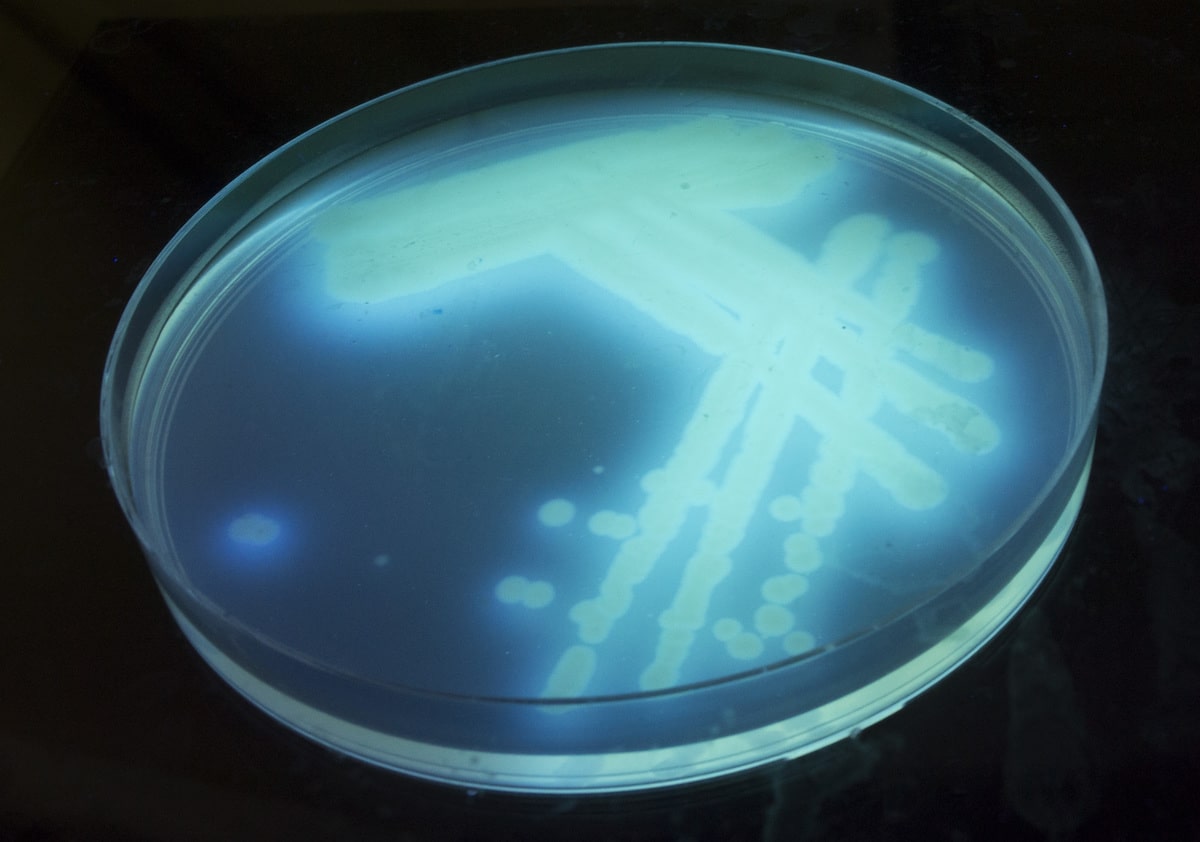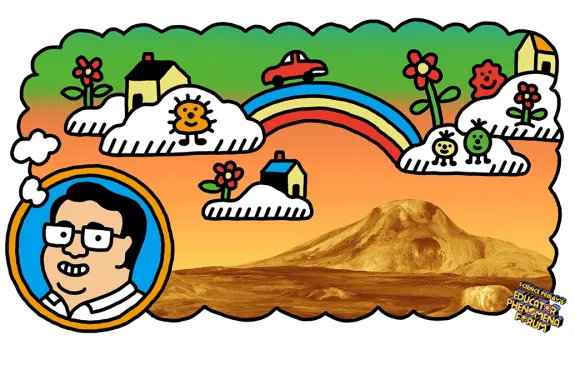Grade Level
6-12
subject
Life Science
Activity Type:
extraterrestrial life, scientific inquiry, extreme environments

Does life exist elsewhere in the universe? How do we even know what to look for when we are trying to detect signs of life? As you might expect, researchers start a little closer to home to figure out the clues that will help us discover places where life might exist off Earth. Take a moment to examine the places shown in the images below. What do you notice about these environments? What do you wonder? Where do you think these photos were taken?
Keep track of your ideas on the Life in the Clouds Worksheet.
Did you notice the ice at the top of the water in the first image? Is that a huge ice spear that seems to be shooting down towards the bottom? What’s on the bottom of the ocean there? Did you notice the plume of smoke? Maybe that is from a volcanic eruption. Steam is coming off of that bubble of liquid. How hot is that? These seem like some pretty extreme environments.
What suggests that these images might be extreme environments? Do you think that we would find life there? What could survive in an icy ocean, the extreme cold of the poles, the shaft of a volcano, or an extremely hot geyser?
Life is pretty amazing. In fact, microbes—living things that are too small to be seen by the naked eye—can survive in each of the environments you looked at. Even more amazing than that, microbes may be the key to figuring out if and where life might exist off of this planet! Scientists use studies of bacteria, extreme and more common, to determine whether other planets or celestial bodies have environments, like the clouds of Venus, that might be able to support life. To learn more about how microbes can help us think about life and signatures for life, we’re going to look at some extremophiles—organisms that live in extreme conditions—and then design and test environmental conditions on E. coli bacteria.
 This resource is part of Science Friday’s Educator Phenomena Forum and was developed collaboratively by Michael Hirsch, middle school science teacher at the Acera School, and Jaime Cordova Ph.D. candidate in Genetics at the University of Wisconsin-Madison.
This resource is part of Science Friday’s Educator Phenomena Forum and was developed collaboratively by Michael Hirsch, middle school science teacher at the Acera School, and Jaime Cordova Ph.D. candidate in Genetics at the University of Wisconsin-Madison.
Click here for a folder of classroom resources.
Extremophiles: Bacteria That Live On The Edge
Let’s start by examining the profile of some extreme environments and comparing them to the known environmental limits—environmental conditions that the microbe can survive in— of several different ecosystems.
Use your Life in the Clouds Worksheet to keep track of your ideas and work.
Examine Some Extreme Ecosystems
Look at the ecosystem profiles and answer the following questions:
- What do you notice about the ecosystems? How do they differ? How are they similar?
- Explain your current ideas about the environmental condition(s) of each ecosystem that pose a challenge to most living organisms. What makes this environment extreme?
Examine The Living Conditions Of Different Microorganisms
As we’ve noted, microbes can survive in many different places. We’re going to look at the environmental limits and known special conditions for several bacteria and use those profiles to determine whether they might be able to survive in one of the ecosystems you looked at above.
Look at the microbe profiles and answer the following question for each ecosystem:
- What microbe(s) could survive in this ecosystem? More than one microbe might survive in each ecosystem.
- What data indicated that the microbe might be able to survive in that environment?
- What further information do you need to know for sure? What experiments might help you understand this further?
Reflection Questions
- Imagine there was an environment that contained conditions from each of these environments but wasn’t on Earth. Do you think earthly microbes could potentially survive there? Why or why not?
- What data or experiments would help you better understand if microbes could survive in that off-planet environment, even if we cannot yet travel there?
What Are The Environmental Limits Of Microbe Growth?

The surface of Venus is about four times hotter than boiling water, and it rains acid strong enough to dissolve bones and even the hardest of microorganisms. Though we’ve seen microbes survive and grow in some pretty extreme environments, it’s unlikely that there are any living organisms on the surface of the planet. While still acidic, conditions in the clouds are a lot cooler and (somewhat) friendlier to life as we know it. That, along with the presence of some key nutrients and minerals, has led scientists to hypothesize if there might be microbes there.
So, if microbes can survive in those conditions on Earth, do you think there could be microbes living in the Venusian clouds?
From the acidic and hot thermal vents of Yellowstone to the high-pressure bottom of the Marianas Trench to deep down in the arctic ice pack, microbes can be found everywhere, even in the clouds. While it is known that bacteria can survive in high altitudes, there is no evidence yet of a complete replication cycle in the cloud. This may potentially mean that bacteria undergo portions of their life cycle at lower altitudes but there is no current research that suggests that microbes can’t survive in the clouds. Taken together, these extreme conditions portray the limits of life for Earthly microbes and our nearest neighbor closest to the sun—Venus.
Thinking about the environmental limits of an organism—the range of environmental conditions that an organism can survive and grow in—is one of the clues that we can use when looking for life elsewhere in the universe. Although extremophiles can give us many clues, we can also look toward more common microbes, like E. coli, for experiments that might help us think about environmental limits and how life changes under those conditions.
Let’s take a look at the growth of E. coli under two different conditions: aerobic, or oxygen-rich treatment, and anaerobic, or oxygen-poor environment.
As you watch both of time-lapse videos above, think about the following questions on your Life In The Clouds Worksheet.
- What do you notice about the Petri dishes?
- Why do you suppose the microbes don’t grow at the same rate?
Aerobic (Oxygen-Rich) E. Coli Growth
Anaerobic (Oxygen-Poor) E. Coli Growth
Reflection Questions
- What did you notice about the streaks of growth on each plate?
- What did that tell you about the environmental limits of each of these microbes?
To think about life in an extreme environment like Venus, scientists use current research on the environmental limits of microbes like E. coli, but they can also design experiments to test a variety of microbe strains over many generations.
Design An Experiment To Test Environmental Limits of A Microbe
You’re going to conduct some research into microbe growth. In this experiment, you will simulate extreme environments to determine the environmental limited—threshold for life—of E. coli K12. Let’s start by taking a look at some of the growth conditions that you might be able to alter in your experiment.

Materials: E. Coli Growth Conditions Experiment
- 1M HCl or lemon juice
- 1M NaOH or baking soda
- LB Agar
- Sodium Chloride
- E. coli K12
- Inoculation loop
- Petri dishes
- Microwave
- Distilled water
- Incubator (optional)
- Refrigerator
- Beakers
- Transfer pipette
E. coli Growth Conditions Experiment
Lab Safety Note: Adults should supervise work with microbes and hot liquids (like agar). DNA and microbes should be handled as if they can cause infections. Handwashing hygiene is required before and after laboratory work by washing with antibacterial soap and water. Keep fingers away from eyes, nose, and mouth. Decontaminate work surfaces before and after laboratory activities and accidental spills.
Reflection Questions
- Describe the differences between your Petri dishes. Focus on describing their physical features and how many microbes are on each dish.
- What sources of human error might have affected your results?
- Consider the four ecosystems and eight microorganisms at the beginning of the resource. Which ecosystem would your microbe best survive? Which microbe is the most similar to the one in your experiment? Back up your claim with evidence from the resource and your experiment.
- Research information on the atmosphere of Venus. Design an experiment to test whether a microbe might be able to survive under those conditions.
How Do Studies Of Earth's Microbes Help In Our Search For Life In The Universe?

In your experiment, you tested the limits by which a simple microbe like E. coli can grow. Although it is unlikely we’ll find E. coli on other planets, we can use the study of simple microbes like E. coli to figure out how terrestrial (Earth) microbes evolved and the conditions where life can exist. Bacteria can help us determine biosignatures—something that can’t be made without the presence of life—and conditions that will help narrow the search for life and habitable places off the Earth.
Studying a few generations of humans can take centuries, but microbes like E. coli and Salmonella can grow from one to one trillion individuals in 24 hours. This means that scientists can study genetic changes across thousands of generations in just a couple of years. “With the rise of large genome datasets in the past few decades, we can do this with most organisms that can be sequenced,” according to Jaime Cordova, a Ph.D. candidate in Genetics at the University of Wisconsin-Madison. “We can ‘track’ microorganisms evolving by looking for changes in the genomes of a bacterial population.”
Microbes grow on every surface of ourselves and in virtually every corner of our world, so it’s not out of this world to think that they may be anywhere living conditions could possibly exist. By expanding research into extremophiles, we can further explore the biochemical limits to life (whether temperature, pH, salinity, etc.). “This information can then be applied in the search for life on other worlds, even if another world doesn’t look like Earth, it may have conditions that extremophiles can survive in,” says Cordova.
So, while the acid-filled clouds of Venus may not sound like our idea of paradise, to the right microbe, it’s might be like having a beachfront villa with an ocean view.
Additional Resources
- While we don’t have billions of years of data on microbes, Michigan State University researcher Richard Lenski has been growing the same E. coli colony for decades. His work reveals how microbe populations evolve over time and help explain what could be possible for microbes we might find elsewhere in the universe.
- Where have scientists taken their research on environmental limits of E. coli? Check out research into whether E. coli can grow in a pure hydrogen atmosphere. What might that indicate about where life can thrive and exist?
- It is not just Venus, two years ago astrobiologists were looking at methane as a sign of life on Saturn’s moon Enceladus.
Next Generation Science Standards
This resource can be used to work toward the following performance expectations:
- MS-LS1-5: Construct a scientific explanation based on evidence for how environmental and genetic factors influence the growth of organisms
- MS-LS2-4: Construct an argument supported by empirical evidence that changes to physical or biological components of an ecosystem affect populations.
- HS-LS4-4: Biological Evolution: Unity and Diversity: Construct an explanation based on evidence for how natural selection leads to adaptation of populations.
 Michael Hirsch once had a principal ask him why he liked cells so much, to which he responded, “they’re neat!” They are the underlying structure of living organisms and their tiny machine-like metabolisms enable life. He believes that science should be a full-body experience of thinking, testing, and questioning, and he loves curating experiences that show kids how satisfying a science class can be.
Michael Hirsch once had a principal ask him why he liked cells so much, to which he responded, “they’re neat!” They are the underlying structure of living organisms and their tiny machine-like metabolisms enable life. He believes that science should be a full-body experience of thinking, testing, and questioning, and he loves curating experiences that show kids how satisfying a science class can be.
Jaime Cordova researches bacterial evolution and uses his work to consider life elsewhere in the universe. He’s been able to work with scientists in a variety of disciplines—geneticists, microbiologists, evolutionary biologists, and even planetary scientists—on his research related to oxygen response in bacteria or life on Venus.
Acknowledgments
Many thanks to Acera School student Levi M., for his assistance in preparing materials, culturing the microbes, and designing the first set of variables to test. Also, thank you to Kerry Crisley for photographing the action shots in the lab.
We’d also like to thank Dr. Nicole Perna, director of the Genome Evolution Laboratory at the University of Wisconsin-Madison, for her support in contributing to this educational resource.
Credits:
Written by Michael Hirsch
Edits by Xochitl Garcia
Advice and Review by Jaime Cordova
Digital Production by Xochitl Garcia and Diana Montano
Meet the Writers
About Michael Hirsch
@MichaelLikesBioMichael L. Hirsch is a biologist and science teacher who specializes in curriculum design and crafting hands-on science experiences for students. When not championing progressive education, he can be found playing music and baking bread. He is a member of the sixth cohort of Science Friday Educator Collaborators.
About Jaime Cordova
@jaimecor_94Jaime Cordova is a Ph.D. candidate at the University of Wisconsin-Madison in Genetics with a minor in Life Sciences Communication. His research focuses on studying how bacteria (such as E. coli and Salmonella) respond to varying oxygen levels and the genetic foundations behind those responses, and how those genetic foundations have evolved. Additionally, Jaime is interested in understanding if life can exist in other worlds, especially the clouds of Venus.

